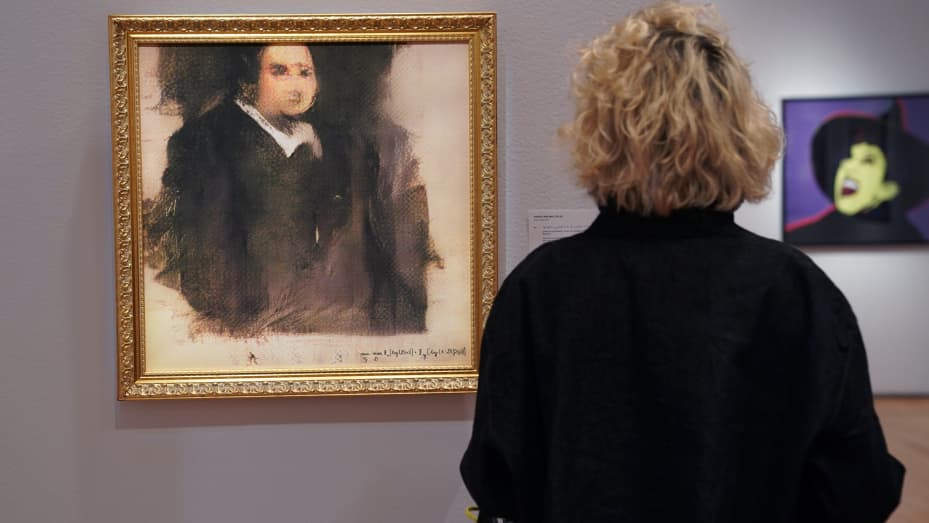"Portrait of Edmond de Belamy" created by French AI engineers and artists called Obvious
Review by Marcus Vine
In the article, “Who Gets Credit for AI-Generated Art?” written by Ziv Epstein et al., the authors state that we dangerously begin anthropomorphizing artificial intelligence, which affects how we trust the AI, as well as how we hold individuals accountable as a result of something created with AI (3). Because of this, we often overlook what role the AI plays in creating the art, whether it is used as a tool or an agent, how the AI is trained on the works of others, and most importantly, who should be credited for the generated artwork.
The authors start their article with a summary of the painting Edmond de Belamy, a piece that was created by AI and then sold at Christie's Art Auction for over $400,000 (1). This sparked a wave of discussion about who takes credit for art created by machines, and it was concluded by Epstein et al. that agency was ultimately determined by how the AI was described (7). However, due to the specificity of the chosen case, many variables that influence modern-day generative AI were not present.
One of these critical variables is how the “input,” as defined by Fjeld and Kortz, is handled. Images are sourced from all over the internet to train these machine learning algorithms, where those images have original authors already. As of the time of writing this paper, copyright and intellectual property law have not caught up to the rapid advancement of generative AI. And so, in practice, art created by text-to-image generative AI is often sold under the guise of being owned by the “prompt-engineer,” the individual that writes the text prompt. This again leads us to more questions about ownership. If an artist were to generate an image and then touch it up in photoshop, should ownership be shared between the artist and the AI? Or would the artist then take full ownership of the piece? “Stealing like an artist” is not a novel concept, as any new piece of art can be viewed already as a collection of pieces and inspirations that are then manifested together by the artist, and not often are artists' inspirations credited with any form of ownership.
As AI becomes more prominent in the art space, there have been many mixed feelings about its use in modern media. However, according to Arbiza Goenaga, there is currently changing artists’ relationship with technology (Arbiza Goenaga 55). He furthers this sentiment by stating:
“As maintained by researchers Glenn W. Smith and Frederic Fol Leymarie we can now begin to think of the machine, not as the artist’s subject matter or medium, but as creator or co-creator. With the current technological development, and with GAN especially, we can confidently begin to speak comfortably of the machine as an artist.” (Arbiza Goenaga 55)
Perhaps soon, generative AI involved in a creative process will need to be given proper credit. More pressing is whether AI is to be considered legally as an entity of its own being or a creation of an individual (Fjeld and Kortz).
I believe that all art generated solely through generative AI and machine learning should be legally considered under creative commons and cannot be sold by the individual who generated it using AI as a tool. AI is good for artists. It allows us to push concepts further and faster than before, increasing the overall quality of the art.
Works Cited
Epstein, Ziv, et al. “Who Gets Credit for AI-Generated Art?” IScience, vol. 23, no. 9, 25 Sept. 2020,
Fjeld, Jessica, and Mason Kortz. “A Legal Anatomy of AI-Generated Art: Part I.” Harvard Journal of Law & Technology, Jolt Digest, 21 Nov. 2017.
Arbiza Goenaga, Mikel. “A Critique of Contemporary Artificial Intelligence Art: Who Is Edmond De Belamy?” AusArt, vol. 8, no. 1, 2020, pp. 51–66.


No comments:
Post a Comment